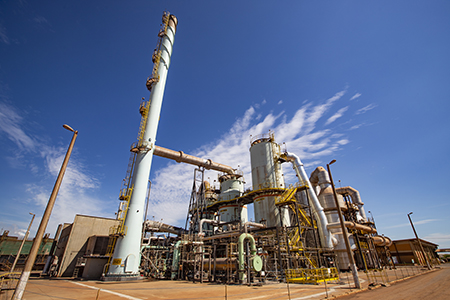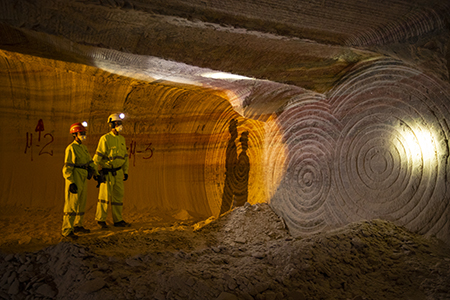“It is estimated 8% market growth in 2020”

Felipe Pecci, Commercial Director of Mosaic Fertilizers
Along with the growth of agricultural production in Brazil, the fertilizer market more than doubled its consumption over the last couple of decades. Despite being connected, these increases were not proportional due mainly to the prior lag of fertilizer use on agricultural crops.
Because of the dissemination of knowledge and the encouragement regarding the use of technologies in the farm, the use of fertilizers has increased, becoming almost mandatory for high yield crops, leading to an unpaired market growth.
In exclusive interview to AgriBrasilis, Felipe Pecci, Commercial Director of Mosaic Fertilizers, talks about the market. Pecci holds a degree in Business Administration from Armando Alvares Penteado Foundation (FAAP), has an specialization in Business Management from INSPER.
AgriBrasilis – What is Mosaic’s role in the fertilizers market in Brazil?
Felipe Pecci – Mosaic Fertilizers is one of the main partners of Brazilian farmers, working on mining, production, imports, sales and distribution of fertilizers, for application in many crops, ingredients for animal nutrition and industrial products. Present in more than ten Brazilian states and Paraguay, the company promotes actions that aim to transform yields, the reality of the places where it operates and food availability in the world. Mosaic Fertilizers believes in the promising future of Brazilian agriculture and has a long-term commitment to farmers, demonstrated by the offer of high technology products and by the provision of differentiated services, bringing important information for the crops with innovative digital solutions and a dedicated technical team. Today the company has the most complete fertilizer portfolio in the market, with innovative solutions that contribute with yield results, sustainability and the quality of Brazilian crops.
AgriBrasilis – In 2020 there was a harvest record, what about the fertilizer market, how did it act? With higher income will the farmer invest more in fertilizers?
Felipe Pecci – Mosaic Fertilizers estimates that the fertilizer market had an 8% growth during the year of 2020 when compared to 2019, reaching a historical record of deliveries to farmers. This accelerated growth has been promoted by two main factors:
– Exchange relation (difference between grains and fertilizers prices) in thresholds of 20-30%, more favorable to farmers when compared to those calculated in the last three years.
– Exponential growth of application of high technology products by farmers – the search for products, such as MicroEssentials and Aspire, which have generated a representative yield increment to various crops developed on national soil, has been increasing about 20-30% per year.

Fertilizer factory
Other highlights:
– The agricultural prices (grains, oil seeds, meat and orange) in local currency, real, have broken records and should keep strong, resulting in a great payback to farmers.
– The international and domestic demand of the main commodities remain heated and have benefited from the exchange rate.
– Anticipated grain sales (current and future harvests).
– The farmer is capitalizing, both his own capital and the bank’s, what facilitates credit release.
– Abundance of resources in possession of farmers due to the highest gross revenue of the historical series.
– Significant improvement of the sugarcane sector – with the increase of ethanol and sugar prices.
– Production costs in dollars have decreased this year and not only because of fertilizers prices, but also because of defensives prices, with good paybacks.
AgriBrasilis – What are the market’s figures in Brazil?
Felipe Pecci – Final statistics of fertilizer delivery from January to October of 2020 show a 10% growth when compared to 2019. We estimate that 2020 had a demand between 39 and 39.5 million tons, about an 8% growth when compared to 2019, when the market reached 36.3 million tons. Fertilizer imports (responsible for approximately 80% of the demand) ended in 32.8 million tons – an 11% growth when compared to 2019.
AgriBrasilis – What are market trends for 2021 and the next years?
Felipe Pecci – For 2021, the factors still are positive, international prices of commodities reached really elevated levels when compared to the last years, the agricultural scene has shown signs of demand problems, which influences the increase of the agricultural prices (in dollars).
In addition, the sale of fertilizers has been taking place in advance to production in the last two years, we estimate that the sale of fertilizers for 2021 has already reached around 50%, compared to approximately 40% in the same period of the previous year. This scenario shows that farmers took advantage of the excellent ratio of fertilizer prices versus commodities to lock in his agri inputs prices.
The trend for the coming years continues to be of growth in the fertilizer market, at a lower rate than in 2020 and 2021, but we will continue to have farmers with a great appetite for increasing the application of technology in their crops. In this case, we are not only talking about increasing the dose per hectare, but also about the use of new technologies – such as Performance fertilizers, whose marketed volume has been gaining ground year after year. In line with this, Mosaic Fertilizers has been investing heavily so that the producer has gains in profitability using the correct technology.
2021 agricultural scenario:
International agricultural scenario has shown signs of supply problems, which influences the increase in agricultural prices in dollars:
– North America harvest was below expectations and reinforced high grain prices
– La Niña marks the summer cycle of the harvest in South America.
– Soybean purchases by China have already extended to 2022. Chinese pig herd in strong recovery. High technology marks the new cycle.
– Occasional problems in the supply of sugar and coffee in important producing countries
AgriBrasilis – Considering the vast planted area in the country, what are the differences between markets in agricultural regions?
Felipe Pecci – Due to its continental characteristics, Brazilian agribusiness chain presents regional peculiarities: In the South region, the main characteristics are the presence of a large number of farmers, but with smaller rural-modules cultivating a wide range of crops. In this same region, there is also a massive presence of large cooperatives and resellers intermediating market access. This model with strong channels is also seen in the Southeast region of the country as well as customers with larger farmers, who also boast the ability to carry out a transaction closer to the manufacturers of inputs. Finally, in the Northern and Northeastern regions, we find a different scenario: farmers with extensive rural-modules, more concentration of high-scale crops and boasting more than enough size and capacity to trade directly with the industry.
AgriBrasilis – What are the innovations in the fertilizer market?
Felipe Pecci – The great challenges in soil fertilization and plant nutrition are more and more focused on increasing the efficiency of nutrients. For a long time the balance of nutrients in Brazilian agriculture was deficient, that is, we removed more nutrients from the soil than were replaced. Currently, most agricultural soils in Brazil already have a positive balance of nutrients, but it is important to remember that the productivity ceiling of the main crops has been rising annually, which continues to generate great pressure on the correct supply of nutrients to crops.
In recent years – with the development of new sources, processes or additives – some innovative fertilizer technologies have been consolidating in the market as they obey a basic principle of fertilization. This basic principle is known as the 4Cs (the C meaning Correct): apply the correct source, in the correct dose, in the correct place and at the correct time. The innovations are being developed in order to allow the best application, distribution and availability of nutrients for the crops, but without giving up generating security and convenience for the farmer.

